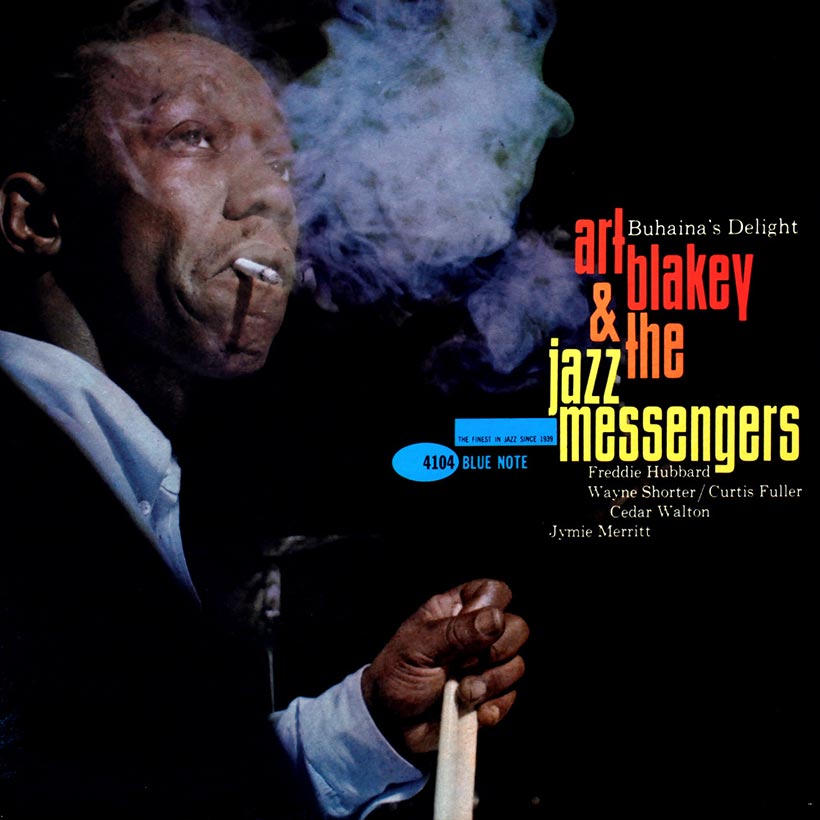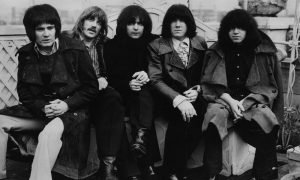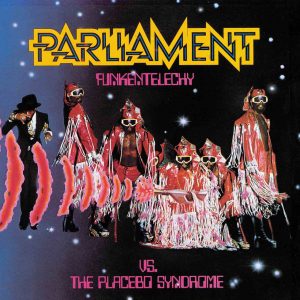In late 1961, when Buhaina’s Delight was recorded for Blue Note Records, Art Blakey was leading one of the most potent and formidable line-ups of his long-running band, The Jazz Messengers.
The legendary jazz group was initially co-founded by Blakey with pianist Horace Silver, in 1954, but when the latter elected to pursue a career leading his own quintet, the Pittsburgh-born drummer was left holding the fort. From that period up until the recording of Buhaina’s Delight, a raft of talented young musicians passed through its ranks, among them high-caliber horn players such as Hank Mobley, Jackie McLean, Johnny Griffin, Lee Morgan, Donald Byrd and Benny Golson. The Messengers proved a valuable training ground for some of the brightest young talents in jazz – so much so that it was dubbed the “Hard Bop Academy,” and those who graduated from it often went on to enjoy stellar careers of their own.
Listen to Buhaina’s Delight on Apple Music and Spotify.
Impeccable training on the bandstand
Trumpeter Lee Morgan – a precociously-talented prodigy who signed to Blue Note as a solo artist at the age of 17, in 1956 – had led Blakey’s front line since 1958, when he made his debut on the band’s famous Moanin’ album. In the late summer of 1961, however, he left to be replaced by an even more dazzling and flamboyant horn blower: Freddie Hubbard.
Like Morgan, the Indianapolis-born Hubbard enjoyed a parallel solo career at Blue Note while also playing with The Messengers. When he joined the band, Art Blakey had just expanded the group from a quintet (which had been its usual configuration) to a sextet, with the addition of Curtis Fuller, whose resonant slide trombone brought both richer textures and deeper sonorities to the group’s horn sound.
Enriched by Fuller’s musical presence, the band at this time also included rising tenor saxophonist Wayne Shorter, pianist Cedar Walton (Buhaina’s Delight was only his second studio outing with the band), and bassist Jymie Merritt, a stalwart from the Moanin’ days. They were all hand-picked by their leader, Blakey, who was an astute judge of young talent and provided them with impeccable training on the bandstand.
Ear-shattering percussion pyrotechnics
Buhaina’s Delight was birthed from two separate sessions at Rudy Van Gelder’s famous Englewood Cliffs studio, on Tuesday, November 28, and Monday, December 18 1961. Its opener, “Backstage Sally,” is regarded as a classic Messengers tune and was written by Wayne Shorter, who had joined the band in 1959 and made his debut on 1960’s The Big Beat album, where he immediately showed his qualities as a composer.
A Guide To Blue Note: 10 Essential Albums You Must Hear
Art Blakey: How The Jazz Messenger Shaped The Future Of Jazz
Best Blue Note Album Covers: 20 Groundbreaking Artworks
Another Shorter tune, “Contemplation,” reveals that, as a composer, the young New Jersey saxophonist was no one-trick pony. It begins as a deep, meditative ballad on which Blakey – normally known for his virile, high-energy drumming – shows both restraint and sensitivity during the song’s slow, haunting intro section. Eventually the tempo picks up, with Shorter providing a darting solo.
“Bu’s Delight” comes from the pen of the other talented tunesmith in The Jazz Messengers at that time: Curtis Fuller. “Bu” was Blakey’s nickname (short for Buhaina, one of the three names the drummer took when he converted to Islam while in Africa during 1948). It opens with a rousing, three-horn brass fanfare punctuated by several fiery drum breaks, before a pulsating swing rhythm develops. The piece is really a vehicle to showcase the drum prowess of Blakey, who takes centre stage three and a half minutes into the tune. His solo builds slowly on a foundation consisting of a closed hi-hat, which keeps the rhythmic pulse beating throughout. A maelstrom of swirling tom-toms gives way to crescendoing press rolls, machine-gun-like snare drum salvos and waves of crashing cymbals. The tune ends with a reprise of the opening horn fanfare before a final barrage of drums climaxes the song on an explosive high.
A pulsating piece of hard bop
After the ear-shattering percussion pyrotechnics of “Bu’s Delight,” Wayne Shorter’s “Reincarnation” sounds positively mellow by comparison even though it swings with a brisk but subtle groove driven by Jymie Merritt’s walking bass. The solos are commendable, especially Hubbard’s, which is characterized by an exuberant athleticism.
There’s more of a blues feel to “Shaky Jake,” an infectious slice of soul jazz by pianist Cedar Walton, which opens with a smooth, interlocking horn theme answered by a churchy piano phrase that recalls the call-and response figures of the group’s classic 1958 tune “Moanin’.”
Buhaina’s Delight closes with “Moon River,” originally a reflective romantic ballad penned by composer Henry Mancini with lyricist Johnny Mercer for the soundtrack to Breakfast At Tiffany’s. It was a hit for R&B singer Jerry Butler in late 1961, but is most associated with crooner Andy Williams. The Messengers, however, liven it up: accelerating the tempo and transforming it into a pulsating piece of hard bop punctuated with attention-grabbing solos.
Presented in a memorable Francis Wolff-photographed front cover that depicted Blakey immersed in a billowing cloud of his own cigarette smoke, Buhaina’s Delight was undoubtedly one of The Jazz Messengers’ strongest albums of the 60s. It stayed true to the group’s “all for one, one for all” belief in the value of musicians working as a team for a common goal. Six decades on from its original release, it still delights
Buhaina’s Delight has been reissued on 180g vinyl. Buy it here.




